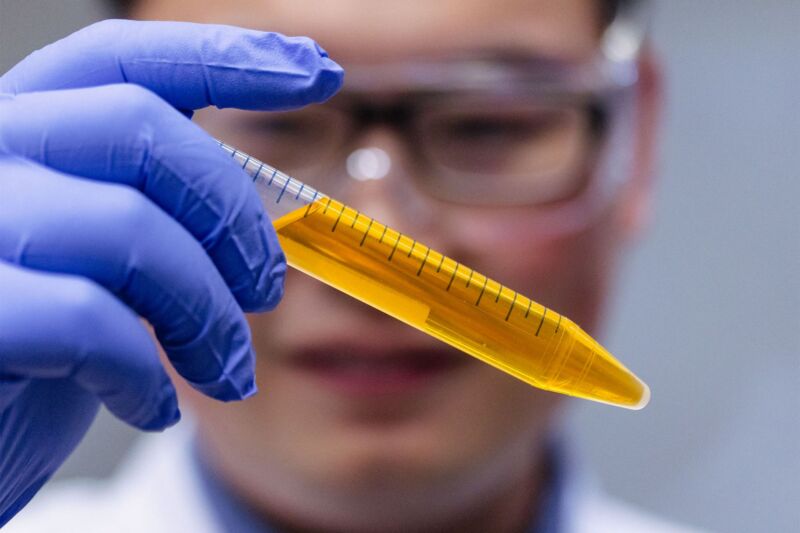Mice made transparent with a dye used in Doritos

Enlarge / Zihao Ou, who helped develop this solution, holds a tube of it.
One key challenge in medical imaging is to look past skin and other tissue that are opaque to see internal organs and structures. This is the reason we need things like ultrasonography, magnetic resonance, or X-rays. There are chemical clearing agents that can make tissue transparent, like acrylamide or tetrahydrofuran, but they are almost never used in living organisms because they're either highly toxic or can dissolve away essential biomolecules.
But now, a team of Stanford University scientists has finally found an agent that can reversibly make skin transparent without damaging it. This agent was tartrazine, a popular yellow-orange food dye called FD&C Yellow 5 that is notably used for coloring Doritos.
Playing with lightWe can't see through the skin because it is a complex tissue comprising aqueous-based components such as cell interiors and other fluids, as well as protein and lipids. The refractive index is a value that indicates how much light slows down (on average, of course) while going through a material compared to going through a vacuum. The refractive index of those aqueous components is low, while the refractive index of the proteins and lipids is high. As a result, light traveling through skin constantly bends as it endlessly crosses the boundary between high and low refractive index materials.